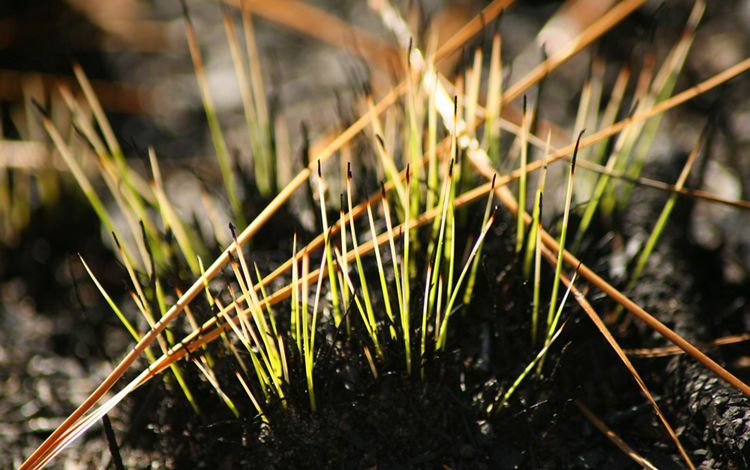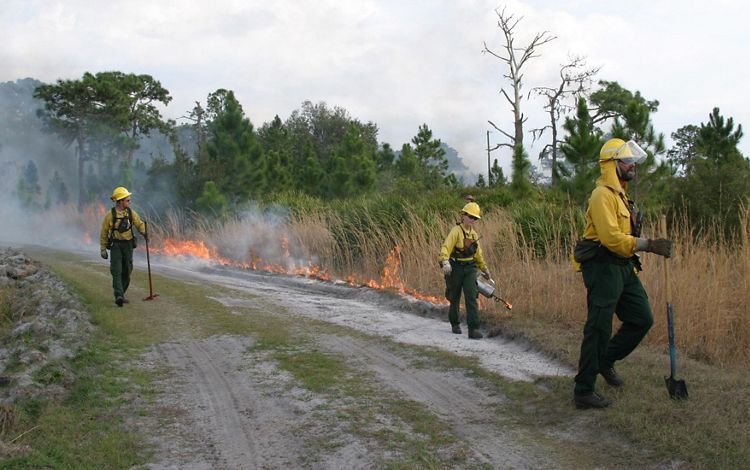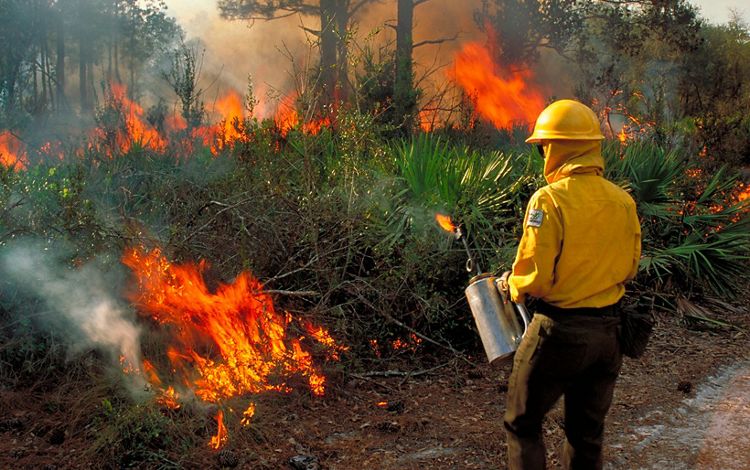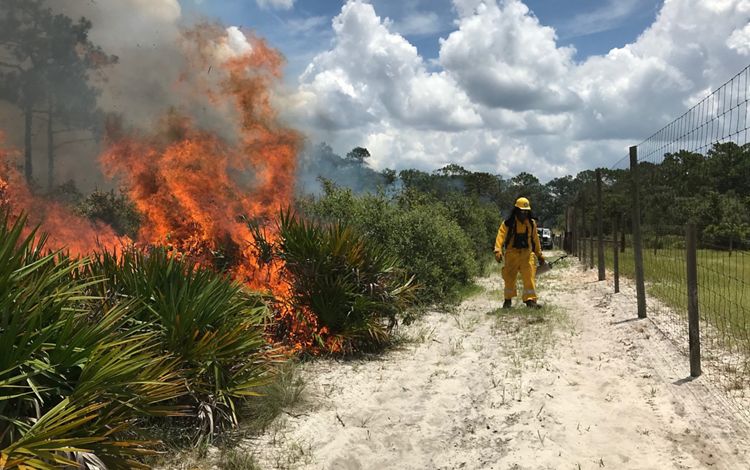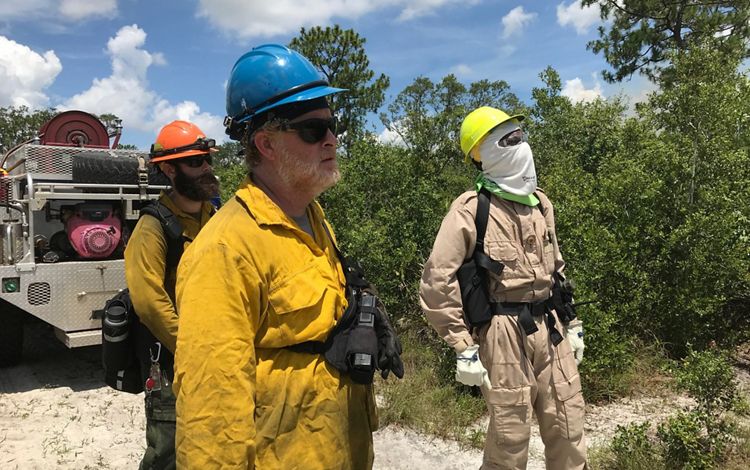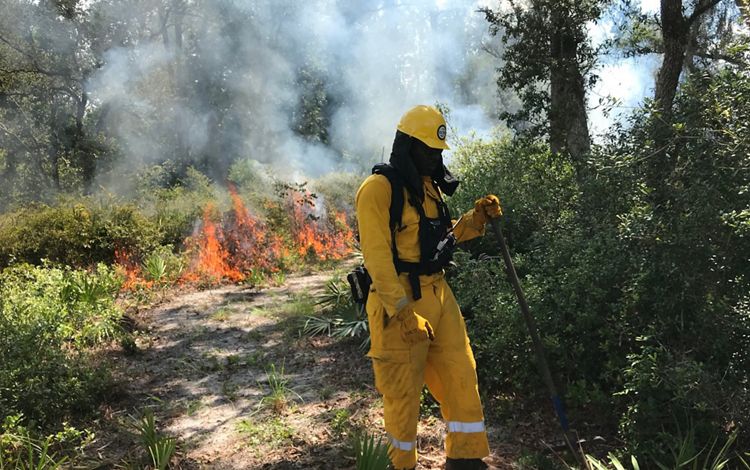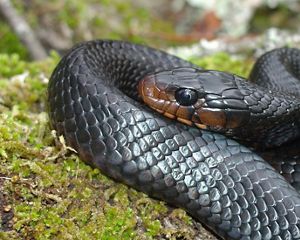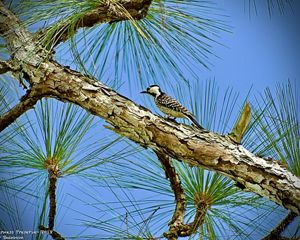
Restoring Fire to Native Landscapes
Florida’s conservation land depends on fire for diversity.
TNC supports the the frequent use of prescribed fire in Florida, where nearly all of the state’s 10 million acres of conservation land depend on fire directly or indirectly to maintain the diversity of plant and animal life. Private forest landowners are important partners as well, as many of their lands also require frequent fire.
Fire Program Hits “Million-and-a-Half” Milestone
TNC’s Florida fire program started in 1979. Since then, we have led or assisted with over 3,400 prescribed fires—“good fires”—on more than 156 conservation areas. This colossal collaboration with a wide variety of federal, state and private partners has resulted in more than 1.5 million acres of safely burned, diverse and resilient landscapes that are less likely to sustain destructive wildfires—bad fires.
Prior to European settlement when Florida was free of roads and houses, fire was a near constant, as natural and necessary as rain. Bolts of lightning would start a fire that might burn for 5 minutes or for months, meandering along, stopping only at large rivers, the Gulf or Atlantic. This natural, chaotic pattern has since been interrupted by the steady growth of development, which often fragments fire-dependent landscapes. As a result of the habitat fragmentation and long-term fire suppression, the natural 1-3 year fire return cycle has been largely disrupted, with some conservation lands not seeing fire for decades. Working with our partners, TNC’s Florida Fire Team identifies priority landscapes in need of the rejuvenating effects of fire and does what it takes to get good fire back on the ground.


The Burn Plan
Prescribed fires are conducted by teams of highly-skilled and experienced professionals. A “burn boss” organizes and supervises the burn following a written plan known as the burn prescription. Strict guidelines maintain crew safety and contingency plans to protect nearby residents and private property. Weather and local climate conditions are monitored days before the burn and continuously during the burn. Specific limits on weather parameters (e.g. temperature, wind speed, relative humidity) are described in the burn prescription which guide the burn boss when choosing the specific burn day.
Lighting the Fire
Ignition crew members use drip torches to light dots or linear strips of fire. On larger fires, all-terrain vehicles (ATVs) fitted with torches or even helicopters are used to complete ignition. “Holding” crew members are assigned the task of making sure the fire stays within the boundaries of the prescribed fire unit. The holding crew uses large pickup trucks or “engines” and utility vehicles (UTVs) that carry water pumps to help them do their job. All of this equipment allows for the careful application of fire and water at the right time, resulting in the fire being “shepherded” across the burn unit.
A Day in the Life of a Prescribed Fire Practitioner
Take a journey to the firelines of Central Florida with TNC South Carolina's Coastal Prescribed Fire Specialist Chelsea MacKenzie as she describes the purpose and process of a controlled burn as it happens.

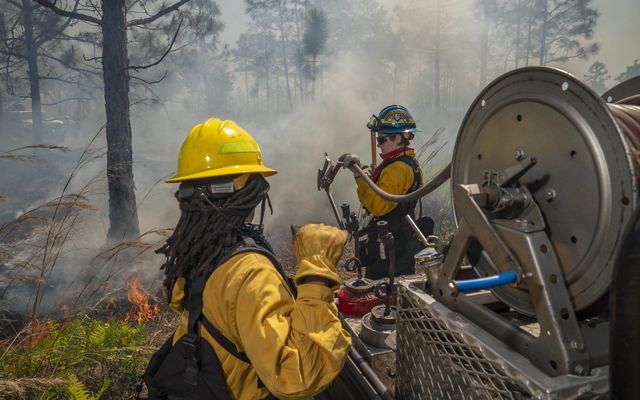

Native Animals Depend on Fire
Many of Florida’s threatened and endangered animals depend upon fire:
- Reptiles: gopher tortoise and indigo snake
- Mammals: Florida mouse and Florida panther
- Birds: Florida scrub-jay, red-cockaded woodpecker and burrowing owl
During a fire, as many as 40 species take refuge in gopher tortoise burrows. These cool, colossal caverns can be up to 40 feet deep!
Native Plants Rebound
Shortly after a prescribed fire, the blackened ground quickly recovers with new, fast growing greenery. Pitcher plants, many orchids, cutthroat grass and wiregrass are among the key species that require the landscape to be frequently burned. Indeed, nearly all of Florida’s terrestrial plant species would be lost or out of balance without it.
Longleaf pine is the perfect example. Its life cycle begins when the seed falls on the fire prepared soil and germinates, with the prior Spring’s fire having cleared the ground and turned hardwood leaves, pine straw, branches and sticks into fertilizer. For years the young tree looks like a bunch of grass, its bud protected by tight needles while it grows a deep taproot. The next fire stimulates the “rocket stage” and the young pine shoots skyward, growing several feet in a little as 18 months, safe above the fire line. Fire literally stimulates the next generation of this fabulous tree and continuously maintains the forest habitat for it to thrive.
A longleaf pine forest is one of the most endangered systems in North America; only 3-5% of a once-magnificent southeastern United States forest remains. Prescribed fire is absolutely key to keeping this iconic ecosystem alive.


How We Implement Prescribed Fire
Our prescribed fire principles
-
TNC employs the best fire practitioners to train, groom and mentor fire leaders, using a mix of online, virtual coursework and in person, hands-on fire experiences.
-
Having strong policies and laws in place that protect the act of implementing fire safely within Florida’s lands is critical to the prescribed fire success that Florida has demonstrated over many decades. TNC’s Government Relations staff work with with agency directors and law makers to promote fire’s benefits to both the natural lands and public safety.
-
Many people have questions about why fire is necessary and how it can be safely applied. There are also questions about smoke, especially with wildfires. TNC gives public presentations and informs the media on these issues.
Partnerships are Critical to Success
TNC is one of only a few nonprofit organizations that adheres to National Wildfire Coordinating Group fire qualifications, allowing our fire crews to collaborate on controlled burns with federal, state and local agencies. TNC also cooperates with other groups in Florida and the Caribbean.
Help Us Make a Difference for Nature
For more than 60 years, we have been working to conserve the lands and waters on which all life depends in Florida. We have helped protect more than 1.2 million acres of vulnerable lands and waters in Florida, and we own and manage more than 40,000 acres including four preserves that are open to the public.
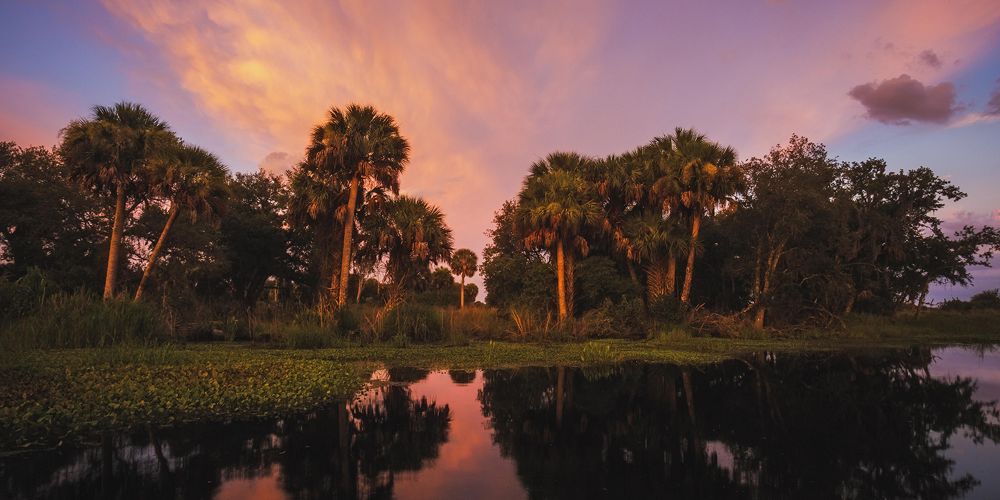
Learn About Prescribed Fire in Florida
